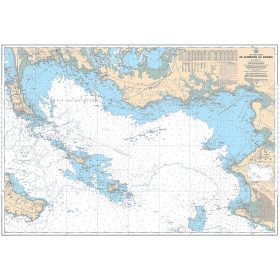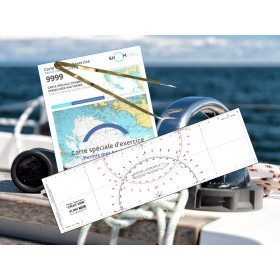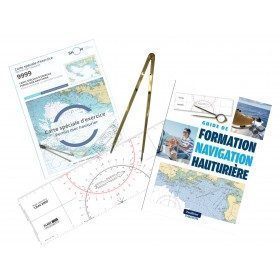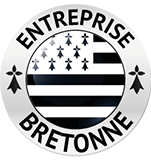Everything you need to know to pass the Deepsea Permit

The offshore licence (its official name is "offshore extension of the licence to drive motorised pleasure craft at sea") is a training course validated by an exam allowing the skipper of a motorboat to have the skills to navigate more than 6 miles from a shelter in the semi-offshore zone up to 60 miles from a shelter and offshore beyond
However, as the training programme is essentially based on navigation and tides, passing the offshore licence allows you to acquire knowledge and skills that are perfectly usable for cruising under sail.
What is the purpose of what you learn on the offshore licence?
At a time of massive development of electronics on board pleasure craft, one might well ask what the point of the offshore licence is. In reality, we can see that the knowledge acquired during the training is often necessary to complete the correct use of onboard electronics. Indeed, these tools, however sophisticated they may be, do not take into account the interaction with the maritime environment that only a skipper can use and anticipate. Some concrete examples
- Sailing in the direction of my future stopover, my GPS shows me an inflection in my course even though I have not changed course the skills acquired during the offshore licence will quickly enable me to determine the current flow which influences the course and the correction to be adopted.
- Planning to reach an anchorage area, my GSM phone does not have internet access to give me the height of the tide when I arrive the water level calculation skills I learned on my offshore licence allow me to quickly determine the water level and whether my anchorage location allows me to stay without running aground.
- Sailing, I have prepared a navigation and a routing software gives me my optimal route the knowledge of the parameters that can influence navigation, which you learn during your offshore sailing licence, will be decisive in determining the compass course to follow to stay on the optimum course.
There are many examples of the usefulness of the offshore licence training, the first being that in the event of an electrical power failure and therefore a breakdown of the on-board electronics... (and yes, it does happen sometimes!), the skipper is very happy to know how to use the traditional tools to finish his navigation.
What is the content of the offshore licence training course?
The training for the offshore licence is designed to allow the sailor to acquire the knowledge and skills to prepare and follow an offshore navigation, i.e. in the semi-offshore and offshore zone:
- In-depth knowledge of the nautical chart: all symbols, limits of use and positioning
- Use of navigation tools: ruler, dry point compass, bearing compass
- Knowing how to point with visible markers: pointing by three bearings, pointing by bearing and alignment or sounding line, pointing by successive bearings, the use of bearings. Don't worry, the astronomical point with the sextant is not on the program ....
- Know the parameters influencing navigation : magnetic disturbances of the compass, wind drift and current drift.
- Determine a point and time of arrival when following a compass course
- Determine the compass heading to follow to predict an accuratepoint of arrival and the time of arrival
- Determine the height of the tide by calculation with the twelfths rule
- Determine the possibilities of passage (time and height) on a shoal according to the tide
- Be able to retrieve and use meteorological information from the open sea
- Know how electronic navigation aidswork and their limits of use
What does the offshore licence exam consist of?
Prerequisites: to be able to take this exam, you must hold a coastal option pleasure craft licence (the offshore licence is an extension of the coastal licence). The offshore licence exam tests last 1.5 hours and are made up of the following tests
- 2 navigation tests on maps(day & night) each noted on 6 points: 12 pts
- 1 tidal calculation test, marked out of 4 points
- 2 questions (MCQ) on meteorology, each worth 1 point: 2 points
- 2 questions (MCQ) on electronic navigation aids worth ½ point each: 1 point
- 1 question (MCQ) on regulations: 1 point
The exam is passed if you have obtained an overall mark of 10/20 and a mark of 7/12 for the navigation tests on maps.for the administrative procedures for the exam, see your trainer or contact the Direction Départementale des Territoires et de la Mer for the administrative procedures for the exam, see your trainer or contact the local office of your department.
How to prepare for the offshore licence?
There are two ways to train for the offshore navigation and prepare for the offshore exam
- Use a boat school: a qualified and trained trainer will train you and will take care of all the administrative procedures directly. The training is organised either in several sessions or in the form of a course.
- Preparing for the test as an independent candidate: you follow a distance learning course and prepare your exam independently. For this option, it is recommended that you choose and use suitable and effective training materials that allow you to contact a trainer if necessary.
For this second possibility, Picksea offers you its online training platform learn-a-navigate.com for this second possibility, Picksea offers you its online training platform and more particularly its course "Preparing for the offshore licence" designed by its team of trainers for an autonomous training.
What are the tools to follow your offshore training?
Whatever the method of preparation you choose, you must have different tools:
- The exam chart SHOM 9999 This is a special card issued to prepare for and take the deep-sea fishing licence exam. You should know that the exam organising services keep the charts as "exam copies".
- A navigation ruler You should know that the exam organising services keep the charts as "exam copies". The chart is a "ruler" (cras ruler or Breton type ruler) which will allow you to measure the routes and headings on the chart for the navigation exercises. To choose a model from the Flash-Tide range, read this article from our blog or ask your trainer for advice.
- A dry point compass this will allow you to measure your distances and determine your position.
Finally, the training manuals designed by the Picksea team will give you a progressive and structured learning process punctuated by exercises closer and closer to those encountered in the exam. Please note that your Picksea shop also offers packs and kits including all or part of the above mentioned materials with preferential prices.
Linked products









 By Marie de Picksea
By Marie de Picksea